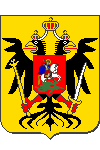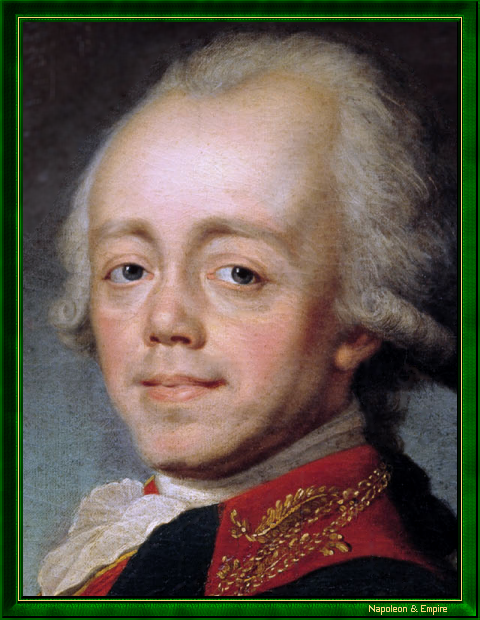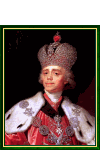Paul Ist
Emperor of Russia
Pronunciation:

Paul I Petrovich Romanov was born in St. Petersburg on October 1, 1754, the son of Grand Duke Peter (later Tsar Peter III) and Grand Duchess Catherine (the famous Empress Catherine II, known as Catherine the Great).
In 1775, the death of his first wife, Wilhelmine of Hesse-Darmstadt, known as Natalia Alexeevna, affected him greatly. Fortunately, his remarriage to Sophie-Dorothée de Wurtemberg, known as Maria Feodorovna, endowed him with a wife whose influence proved positive and beneficial.
His careful upbringing enabled him to make a very good impression when he and his wife travelled to Europe, particularly France, in 1782. He was an apparently well-balanced, if very nervous, young man.
Catherine's decision to pass on the throne to her grandson Alexander rather than to a natural heir whose ideas she did not share, provoked resentment in him that soon turned to hatred.
On the empress's death on November 6, 1796, Paul destroyed all documents concerning the succession and ascended the throne. One of his first acts was to publish a law establishing the rules for the transmission of power within the imperial family. It remained in force until 1917.
Paul's reign was then one long deconstruction of his mother's work. It was also a time of contradictory decisions and arbitrariness. No one in the empire was sure of their future under a tsar who became increasingly shady, whimsical and fanatical about military discipline.
In the face of the French Revolution, Paul I was first and foremost a resolute adversary. He welcomed Louis XVIII to Mittau and Condé's army to Volhynia (northwestern Ukraine). Many French emigrants settled in Russia.
In 1799, Paul I provided one of the strongest contingents in the second coalition. Led by general Alexander Vasilyevich Suvorov, he achieved success against Jean Victor Marie Moreau and Etienne Macdonald, but was repulsed by Andréa Masséna at the Second Battle of Zurich (September 25-26, 1799).
After 18 Brumaire, however, the Tsar drew closer to France. He broke with England and sent troops to India.
Count Pyotr Alexeyevich Pahlen, one of his closest collaborators, fomented a plot that led to the assassination of Paul I on March 23, 1801. The Tsar was killed, perhaps by accident, in his room at St. Michael's Castle in St. Petersburg, an imperial residence he had just built and moved into forty days earlier. His eldest son Alexander, who succeeded him, as well as the English government, were frequently suspected of having played a part in the murder.
An explosion of joy greeted the news of his death. Only the peasants, remembering that they owed him the first measures taken against the excesses of serfdom, saluted his memory.
"Paul Ist" by Stepan Semenovich Shchukin (1758 or 1762 - 1828).

All dates on this page are in the Gregorian calendar (then eleven and then twelve days ahead of the Julian calendar in use in Russia at the time).
Other portraits

"Paul Ist of Russia" by Vladimir Lukich Borovikovsky (Mirgorod, Ukraine 1757 - Saint Petersburg 1825).